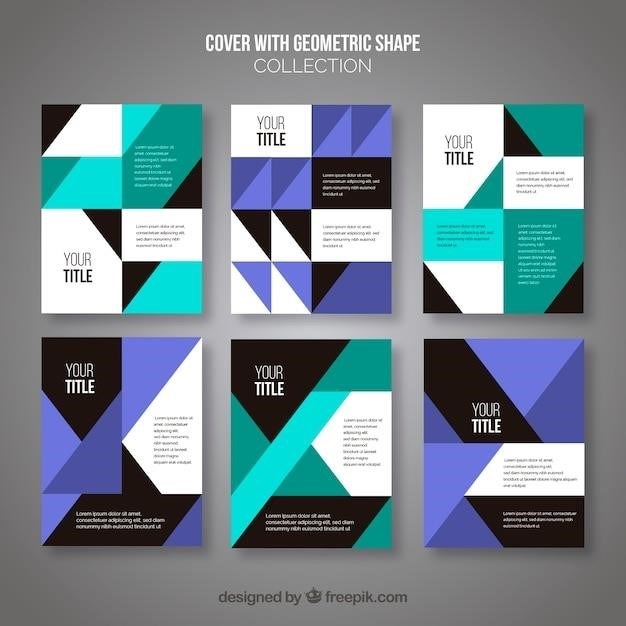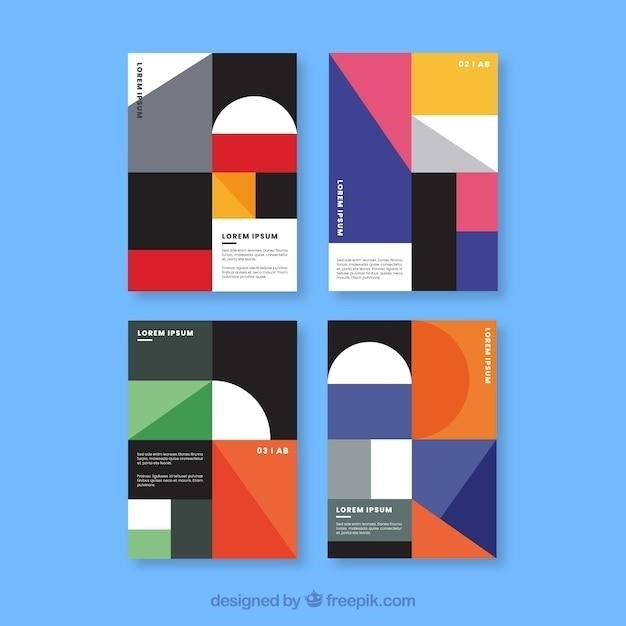
norton design books pdf
Norton Design Books⁚ A Comprehensive Guide
Robert L. Norton, a renowned mechanical engineering professor, has authored several influential design books that have become staples in engineering education and practice. These books cover a wide range of topics, from fundamental machine design principles to specialized areas like cam design and portfolio development. This comprehensive guide explores the key works of Robert L. Norton, providing insights into their content, accessibility, and relevance in today’s engineering landscape.
Introduction to Norton Design Books
Robert L. Norton’s design books have earned a prominent position in the field of mechanical engineering, serving as valuable resources for both students and professionals. Characterized by their comprehensive approach, practical examples, and clear explanations, Norton’s works have become essential references for understanding the intricacies of machine design. His books delve into the core principles of machine design, exploring topics like stress analysis, fatigue, and dynamic behavior of mechanical systems. They also cover specialized areas, such as cam design, a critical aspect of many mechanical systems. Norton’s books are known for their emphasis on real-world applications, providing numerous case studies and practical examples to illustrate theoretical concepts. This hands-on approach makes the learning process more engaging and helps students and practitioners apply the principles effectively in real-world scenarios.
Exploring the Works of Robert L. Norton
Robert L. Norton’s prolific writing career has yielded a number of influential books that have shaped the landscape of mechanical engineering education. Two of his most notable works are “Machine Design⁚ An Integrated Approach” and “Design of Machinery⁚ An Introduction to the Synthesis and Analysis of Mechanisms and Machines.” These books have become standard texts in universities worldwide, providing a comprehensive and practical understanding of machine design principles. “Machine Design⁚ An Integrated Approach” adopts a case-based approach, presenting real-world engineering problems and guiding readers through their solutions. This approach fosters a deeper understanding of design principles and their practical applications. “Design of Machinery” focuses on the synthesis and analysis of mechanisms and machines, covering topics like kinematics, dynamics, and stress analysis. Norton’s books are distinguished by their clear explanations, detailed illustrations, and numerous worked examples, making them accessible to a wide audience. His writing style is engaging and insightful, making complex concepts easier to grasp.
Machine Design⁚ An Integrated Approach
Robert L. Norton’s “Machine Design⁚ An Integrated Approach” stands as a comprehensive and widely-adopted textbook in the field of mechanical engineering. This book is recognized for its balanced approach to both static and fatigue failure theories and analysis. It emphasizes the synthesis and design aspects of machine elements, providing a robust foundation for students and professionals alike. “Machine Design⁚ An Integrated Approach” distinguishes itself by its emphasis on real-world applications. The book presents numerous case studies and practical examples, illustrating the application of design principles in various engineering contexts. This approach fosters a deep understanding of the theoretical concepts and their practical relevance in solving real-world design challenges. Norton’s writing style is clear and engaging, making the complex concepts of machine design accessible to a broad audience. The book’s numerous illustrations and worked examples further enhance its pedagogical value, providing a visual and practical framework for understanding the subject matter.
Design of Machinery⁚ An Introduction to the Synthesis and Analysis of Mechanisms and Machines
Robert L. Norton’s “Design of Machinery⁚ An Introduction to the Synthesis and Analysis of Mechanisms and Machines” is a highly acclaimed textbook that delves into the intricate world of machine design. This comprehensive guide provides a thorough exploration of the fundamental principles underlying the design, analysis, and synthesis of mechanisms and machines. The book covers a wide range of topics, including kinematics, dynamics, and the analysis of various machine elements. Norton’s approach is characterized by its clarity, depth, and emphasis on practical applications. He skillfully integrates theoretical concepts with real-world examples, providing students with a strong understanding of the practical implications of machine design principles. The book’s numerous illustrations, worked examples, and end-of-chapter problems further enhance its pedagogical value, making it a valuable resource for both classroom learning and self-study. Norton’s “Design of Machinery” is widely recognized for its balanced coverage of both the analytical and synthetic aspects of machine design. The book equips readers with the tools and knowledge necessary to design, analyze, and optimize complex machinery systems, making it an essential resource for aspiring and practicing mechanical engineers.
Other Notable Norton Design Books
Beyond his seminal work on “Design of Machinery,” Robert L. Norton has authored several other notable design books that have contributed significantly to the field of mechanical engineering. These books, while addressing specific areas of design, share a common thread⁚ Norton’s commitment to clear explanations, practical applications, and a focus on problem-solving. “Cam Design and Manufacturing Handbook” is a valuable resource for engineers involved in the design and manufacturing of cam-follower systems. This book provides a comprehensive overview of cam design principles, analysis techniques, and manufacturing considerations. “Portfolio Design” offers guidance to aspiring and established architects and designers on creating compelling portfolios that effectively showcase their skills and experience. Norton’s expertise in design and his understanding of the industry’s expectations make this book a valuable tool for professionals seeking to enhance their presentation and marketing efforts. These additional publications demonstrate Norton’s dedication to fostering a deeper understanding of design principles across various engineering domains. His books serve as valuable resources for students, professionals, and researchers alike, continuing to shape the field of mechanical engineering.
Cam Design and Manufacturing Handbook
“Cam Design and Manufacturing Handbook” stands as a testament to Norton’s deep understanding of cam design and manufacturing principles. This book delves into the intricate world of cam-follower systems, offering a comprehensive guide for engineers seeking to design, analyze, and manufacture these essential mechanical components. The handbook meticulously covers various aspects of cam design, including kinematic analysis, dynamic analysis, and optimization techniques. It explores different cam profiles, follower types, and manufacturing methods, providing practical insights and solutions for real-world applications. Norton’s focus on both theory and practice makes “Cam Design and Manufacturing Handbook” an indispensable resource for engineers working in fields such as automotive, robotics, and automation. It equips them with the necessary knowledge and tools to design and manufacture cam-follower systems that meet demanding performance requirements and ensure optimal system efficiency. The book’s comprehensive approach, coupled with Norton’s clear and concise writing style, makes it a valuable reference for both seasoned professionals and students entering the field.
Portfolio Design
While not directly authored by Robert L. Norton, “Portfolio Design” by Harold Linton, published by W.W. Norton & Company, stands as a valuable resource for architects and designers seeking to effectively showcase their work. This book delves into the art and science of creating compelling architectural portfolios, guiding readers through the process of selecting, organizing, and presenting their projects in a visually impactful and persuasive manner. Linton emphasizes the importance of strategic storytelling within the portfolio, encouraging designers to highlight their unique skills, experience, and design philosophy. The book provides practical advice on layout, typography, and image selection, offering insights into how to create a portfolio that resonates with potential clients and collaborators. “Portfolio Design” goes beyond the aesthetics, delving into the marketing aspects of portfolio creation, offering strategies for promoting one’s work and building a strong professional brand. Whether you are a recent graduate or an experienced architect, “Portfolio Design” offers valuable guidance on crafting a portfolio that stands out in a competitive field, helping you effectively communicate your design vision and secure the opportunities you seek.
Accessing Norton Design Books
Acquiring Robert L. Norton’s design books is made convenient through various avenues, allowing students, professionals, and enthusiasts to access these valuable resources. Online libraries like Open Library and Archive.org offer digital versions for temporary borrowing, providing a cost-effective way to explore the content. However, these platforms limit borrowing time, often restricting access to one hour or 14 days. For long-term ownership, purchasing options are available through retailers like Amazon and AbeBooks, offering physical copies as well as eBooks in various formats. Additionally, the McGraw-Hill Education website provides access to the latest editions of Norton’s books, allowing for direct purchase and digital downloads. Regardless of the chosen method, Norton’s design books are readily available, ensuring accessibility for anyone seeking to delve into the world of mechanical engineering design and learn from the expertise of a renowned author.

Online Resources and Libraries
The digital age has revolutionized access to educational materials, and Norton design books are no exception. Online platforms like Open Library and Archive.org provide a wealth of free resources, including digitized versions of Norton’s publications. These platforms function as digital libraries, allowing users to borrow books for a limited time, typically ranging from one hour to 14 days. While this option offers a convenient and cost-effective way to explore Norton’s works, it does come with restrictions on borrowing duration. For those seeking long-term access, purchasing physical copies or digital versions remains a viable option. However, the availability of free digital copies through online libraries provides a valuable resource for students, professionals, and anyone interested in learning from the insights of Robert L. Norton.
Purchasing Options
For those seeking a permanent copy of a Norton design book, various purchasing options are available. Traditional bookstores and online retailers like Amazon offer physical copies of Norton’s works, providing a tangible resource for reference and study. Digital versions are also readily accessible through platforms such as Amazon Kindle, allowing for convenient reading on various devices. The availability of both physical and digital formats caters to individual preferences and reading habits. Additionally, specific editions of Norton’s books, like the 6th edition of “Design of Machinery,” can be purchased directly from publishers, ensuring access to the most up-to-date content and revisions. When making a purchase, it’s recommended to compare prices and availability across different retailers to find the most advantageous option. Ultimately, the choice of purchase method depends on individual needs, budget, and preferred reading format.
The design books authored by Robert L. Norton represent a valuable resource for students, professionals, and anyone interested in the field of mechanical engineering. From fundamental principles to advanced applications, Norton’s works provide a comprehensive and insightful exploration of machine design. Whether accessed through online libraries, digital platforms, or physical copies, these books offer a wealth of knowledge and practical guidance. Their accessibility and enduring relevance make them a cornerstone in the education and practice of mechanical engineering, ensuring that Norton’s contributions continue to shape the design of machines for generations to come. The combination of Norton’s extensive experience, clear writing style, and practical examples makes these books a valuable asset for anyone seeking to deepen their understanding of machine design and its applications.